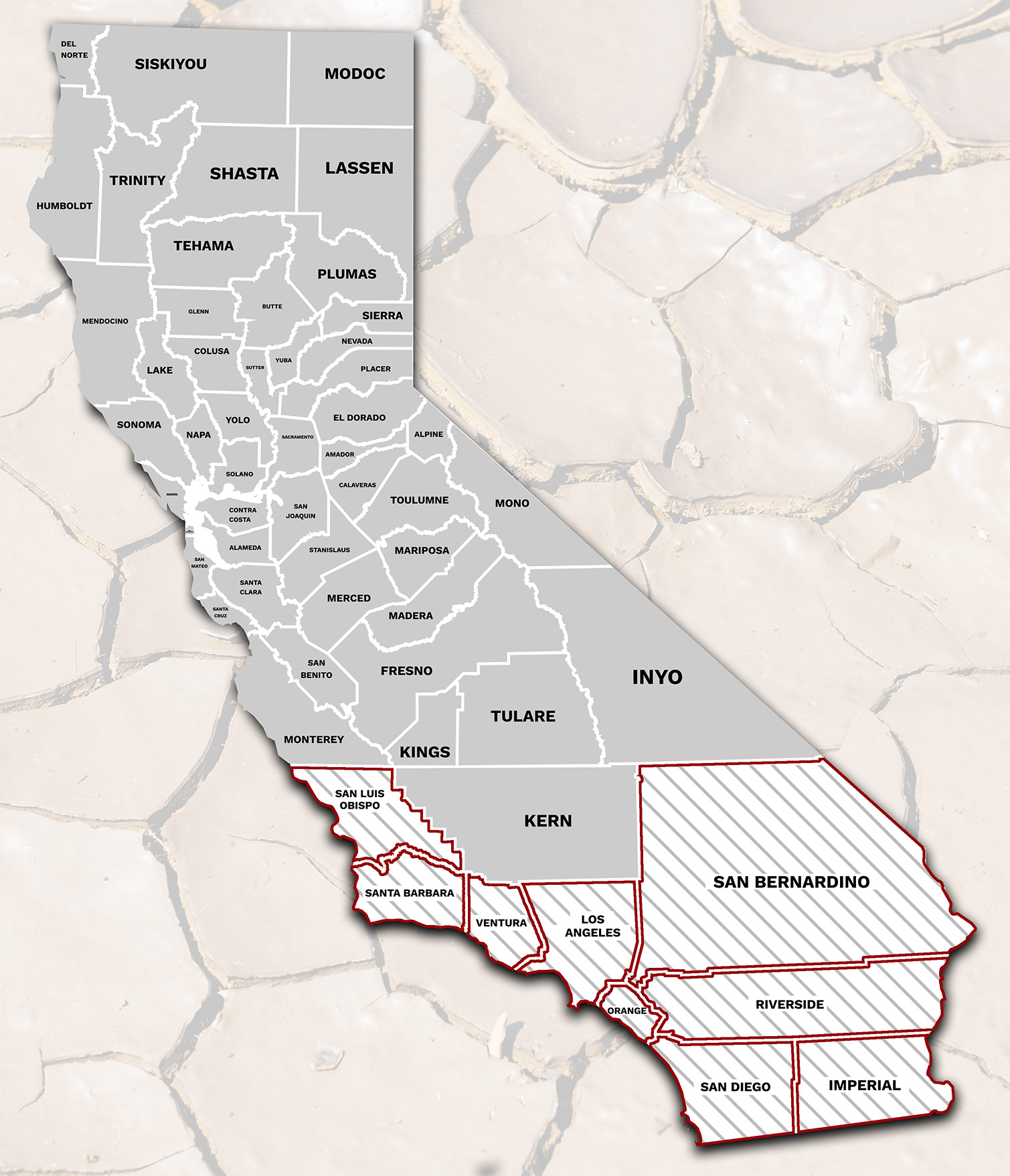Piloting A Modern Approach to Drought Early Warning

Drought has many negative impacts on communities and industry, including reduced agriculture production, significantly reduced water quality and quantity, increased incidence of illness and disease, and an overall diminished quality of life.
NOAA’s Physical Sciences Laboratory and National Integrated Drought Information System (NIDIS) are working with the California State Climatologist/California Department of Water Resources , the NOAA-supported California-Nevada Adaptation Program , and NOAA’s National Weather Service and National Centers for Environmental Information to create a better early warning system for predicting drought and its impacts.
The team has initiated a pilot of a drought resilience framework for nine (9) Southern California counties over the 2024-2025 winter, the region’s wet season. This Water Year 2025 Pilot uses customized weather data and forecasts to create future drought scenarios that can help local users in specific industries, like farming, water management, and public health, plan ahead and make decisions such as initiating water conservation plans before drought hits.
More about the pilot
The Water Year 2025 pilot aims to help lessen the impacts of drought by discovering the opportunities and challenges to delivering tailored drought early warning information that integrates users’ needs and feedback in real time. The pilot’s approach was a result of a collaborative meeting of decision-makers and information providers from the agricultural, water utility, and public health communities in Southern California.
The first outlook from this initiative was released in October 2024, with additional outlooks being released each month through May 2025, after which the pilot’s outcomes will be studied. Written outlooks and recordings of the outlook presentations are available on the NIDIS Drought Early Warning System Water Year 2025 Pilot page. Should this pilot be effective, the effort could next be expanded into the well-known water challenged Southwestern United States region.
Why Southern California?
The pilot builds off of the current California-Nevada Drought Early Warning System (DEWS), which has helped California and Nevada anticipate drought conditions since 2017. Southern California specifically benefits from a more advanced and tailored drought warning system because it:
- has diverse and variable weather and climate and a complex water supply system relied upon by over 23 million people;
- Has a variety of communities and industries that need annual rainfall, supplemental water from natural sources such as the Colorado River or Sierra Nevada snow, or both;
- Has a history of, and experience dealing with, multi-year droughts over the past 20 years; and
- Is expected to have ongoing future droughts due to natural conditions that have a substantial impact on the area, such as La Nina.
Follow the project
For more information at to stay up-to-date with the drought early warning pilot:
This article was adapted from NIDIS project materials.
Posted: February 13, 2025
Back to PSL News | Signup for PSL email updates

